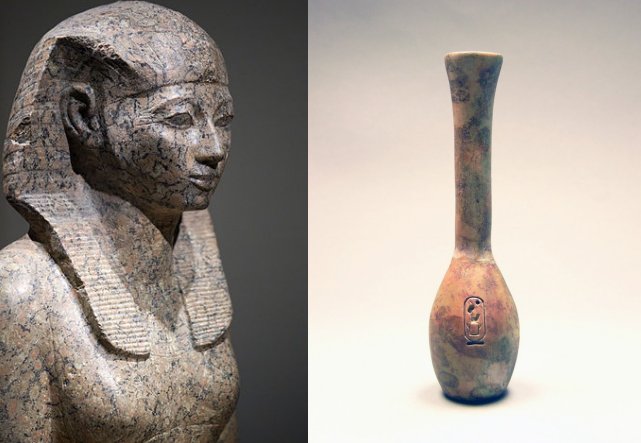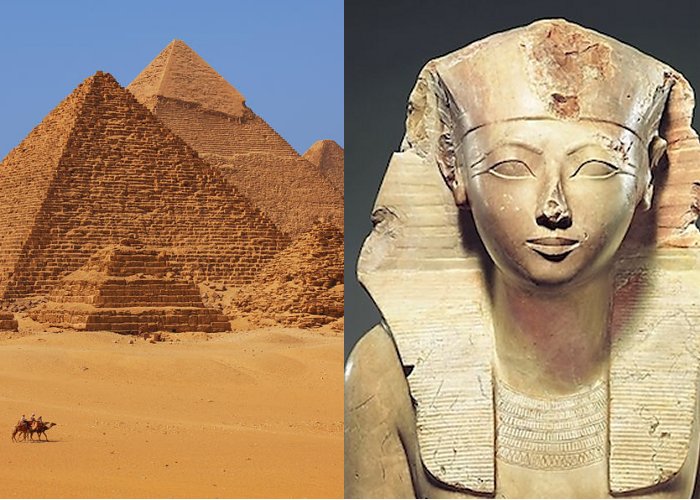Deadly Ancient Secrets Of Queen Hatshepsut’s Flacon
Ellen Lloyd - AncientPages.com - If the ancient Egyptian Queen Hatshepsut knew how deadly her flacon was, she wouldn’t have touched it. But she did and this may have caused her death.
Pharaoh Hatshepsut was a remarkable female who was just as successful as strong and perhaps this was the reason why she was deliberately forgotten and erased from history.
Hatshepsut was the fifth pharaoh of the Eighteenth dynasty of Egypt. Hatshepsut came to the throne of Egypt in 1478 BC. Officially, she ruled jointly with Thutmose III who had ascended to the throne as a child one year earlier.
Deir el-Bahari with temples of Hatshepsut, Thutmosis III and Mentuhotep II, Luxor, Egypt. Image credit: Wikipedia Commons
During her reign there were no were no assassinations, but only prosperity in ancient Egypt. She built more structures than any king previous to her and she was interested in spreading wealth.
Her reign saw one of Ancient Egypt’s most prolific building periods, but pharaoh Hatshepsut was ill. She suffered from cancer that eventually killed her.
See also:
Pharaoh Hatshepsut: Skillful And Efficient Female Ruler Who Brought Prosperity To Ancient Egypt
Why Was Pharaoh Hatshepsut’s Reign Virtually Erased From History?
Solar Cult Complex In The Temple Of Hatshepsut In Deir El-Bahari Reconstructed
For many years, the flacon of Queen Hatshepsut lay unexplored. It was believed to be a perfume flask, until Michael Höveler-Müller, head of the permanent collection at the Egyptian Museum at the University of Bonn, and Dr Helmut Weidenfeld from the university’s pharmacology unit, examined it more closely.
Hatshepsut was a very strong and determined pharaoh.
When scientists examined the contents of the flacon, they discovered a deadly ancient secret. The flacon did not contain perfume at all. The flacon of Hatshepsut held a skin care lotion made of palm and nutmeg apple oil. It was used as medication for a monarch suffering from eczema.
In addition, the pharmacologists found a strongly carcinogenic substance that is still being used to this day to treat skin conditions, but banned from cosmetics because it is carcinogenic. A carcinogen is any substance that has the potential to cause cancer in living tissues.
This has made historians wonder if perhaps Hatshepsut was killed by her own medicine.
According to Dr. Helmut Wiedenfeld from the University of Boon, it is very likely that Queen Hatshepsut who had a chronic skin disease may have exposed herself to a great risk over the years by using the dangerous substance.
Written by Ellen Lloyd – AncientPages.com
Copyright © AncientPages.com All rights reserved. This material may not be published, broadcast, rewritten or redistributed in whole or part without the express written permission of AncientPages.com
Expand for referencesMore From Ancient Pages
-
 Remarkable Funerary Relief Of Life-Size Couple Discovered At The Necropolis Of Porta Sarno In Pompeii
Archaeology | Apr 2, 2025
Remarkable Funerary Relief Of Life-Size Couple Discovered At The Necropolis Of Porta Sarno In Pompeii
Archaeology | Apr 2, 2025 -
 New Genes May Explain Why Humans Got Such Big Brains
Archaeology | Jun 2, 2018
New Genes May Explain Why Humans Got Such Big Brains
Archaeology | Jun 2, 2018 -
 5,000-Year-Old Black Death Victim Challenges Theories Of Development Of Human Civilization
Archaeology | Jul 1, 2021
5,000-Year-Old Black Death Victim Challenges Theories Of Development Of Human Civilization
Archaeology | Jul 1, 2021 -
 Mystery Of The Bizarre Dark Figure Vanishing Into Thin Air Seen By Hotel Guests And Staff
Featured Stories | Mar 15, 2019
Mystery Of The Bizarre Dark Figure Vanishing Into Thin Air Seen By Hotel Guests And Staff
Featured Stories | Mar 15, 2019 -
 Young Warrior’s Grave Dated To A Sixth Century Unearthed At Langobard Necropolis In Czech Republic
Archaeology | Jul 5, 2022
Young Warrior’s Grave Dated To A Sixth Century Unearthed At Langobard Necropolis In Czech Republic
Archaeology | Jul 5, 2022 -
 Polycarp Of Smyrna: Burned At The Stake And Pierced With A Dagger
Featured Stories | Jun 25, 2020
Polycarp Of Smyrna: Burned At The Stake And Pierced With A Dagger
Featured Stories | Jun 25, 2020 -
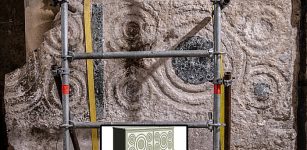 Graffiti Reveals Crusaders’ Beautiful Altar In The Church Of The Holy Sepulchre
Archaeology | Jul 24, 2024
Graffiti Reveals Crusaders’ Beautiful Altar In The Church Of The Holy Sepulchre
Archaeology | Jul 24, 2024 -
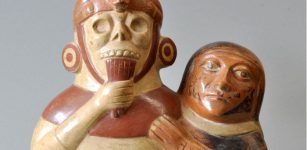 South American Musical Instruments Reflect Population Relationships – Archaeological Records Reveal
Archaeology | Sep 20, 2021
South American Musical Instruments Reflect Population Relationships – Archaeological Records Reveal
Archaeology | Sep 20, 2021 -
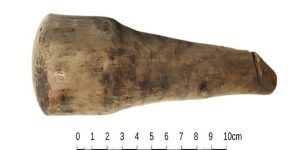 Unique Roman Artifact Discovered At Vindolanda Was More Than A Good Luck Charm
Archaeology | Feb 20, 2023
Unique Roman Artifact Discovered At Vindolanda Was More Than A Good Luck Charm
Archaeology | Feb 20, 2023 -
 Qijia Culture – Its Disappearance Remains An Ancient Mystery
Civilizations | Feb 5, 2021
Qijia Culture – Its Disappearance Remains An Ancient Mystery
Civilizations | Feb 5, 2021 -
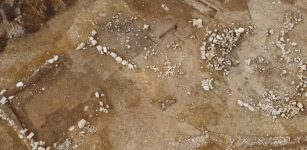 Bronze Age Roundhouses And Roman-Era Settlement Discovered In Newquay, Cornwall
Archaeology | Apr 11, 2023
Bronze Age Roundhouses And Roman-Era Settlement Discovered In Newquay, Cornwall
Archaeology | Apr 11, 2023 -
 Kaillachuro’s Hunter-Gatherers Built Monumental Burial Mounds In The Titicaca Basin 1,500 Years Earlier Than Previously Thought
Archaeology | Jul 21, 2025
Kaillachuro’s Hunter-Gatherers Built Monumental Burial Mounds In The Titicaca Basin 1,500 Years Earlier Than Previously Thought
Archaeology | Jul 21, 2025 -
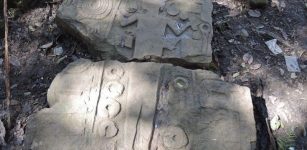 Mystery Of The Ancient Forgotten Mizoram Civilization And Lost City Of Vangchhia
Civilizations | Jun 16, 2020
Mystery Of The Ancient Forgotten Mizoram Civilization And Lost City Of Vangchhia
Civilizations | Jun 16, 2020 -
 Sailing With The Phoenicians: Great Traders, Sailors And Navigators
News | Sep 6, 2015
Sailing With The Phoenicians: Great Traders, Sailors And Navigators
News | Sep 6, 2015 -
 Ancient Wooden Spade Found Under Melting Ice In Norway – Archaeologists Urge Hikers To Stay Alert
News | Sep 16, 2024
Ancient Wooden Spade Found Under Melting Ice In Norway – Archaeologists Urge Hikers To Stay Alert
News | Sep 16, 2024 -
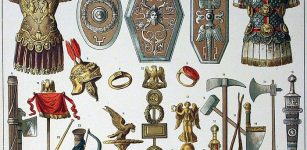 Source Of Ancient Roman Silver Was The Iberian Peninsula
Archaeology | Dec 18, 2021
Source Of Ancient Roman Silver Was The Iberian Peninsula
Archaeology | Dec 18, 2021 -
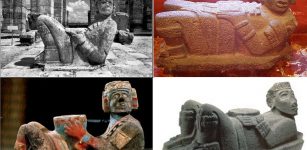 Image Of The Day: Chacmool – Famous Ancient Statue Of Pre-Columbian Mesoamerica
Image Of The Day | Sep 10, 2015
Image Of The Day: Chacmool – Famous Ancient Statue Of Pre-Columbian Mesoamerica
Image Of The Day | Sep 10, 2015 -
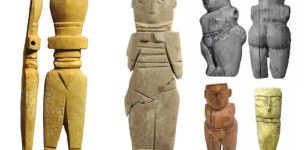 Ancient Wooden ‘Coptic Dolls’ May Have Been The Ancestors Of Today’s Barbie Dolls
Archaeology | Sep 23, 2023
Ancient Wooden ‘Coptic Dolls’ May Have Been The Ancestors Of Today’s Barbie Dolls
Archaeology | Sep 23, 2023 -
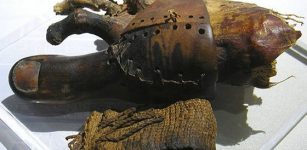 3,000-Year-Old Egyptian Artificial Wooden Toe In New Light
Archaeology | Jun 20, 2017
3,000-Year-Old Egyptian Artificial Wooden Toe In New Light
Archaeology | Jun 20, 2017 -
 Beautiful Mosaics In Ancient City Of Germanicia
Archaeology | Sep 17, 2020
Beautiful Mosaics In Ancient City Of Germanicia
Archaeology | Sep 17, 2020

